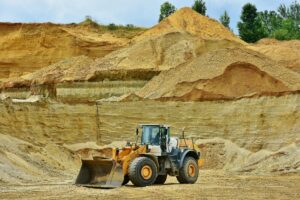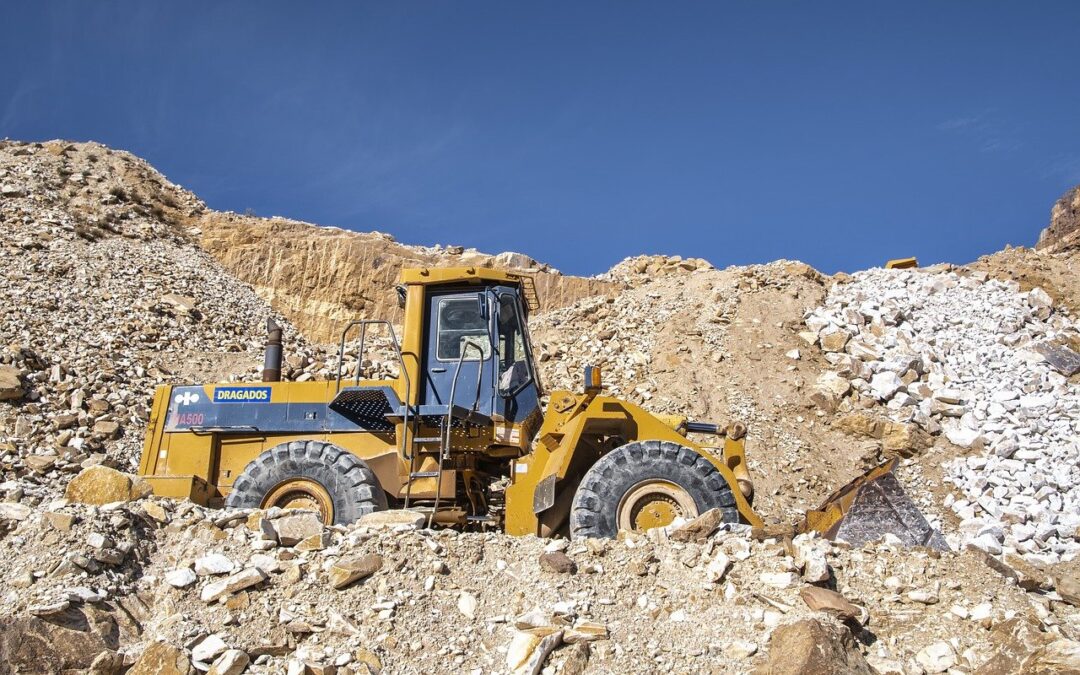Mining is a vital industry for extracting natural resources that fuel various sectors of the economy. One of the two main types of mining, surface mining, offers several benefits compared to underground mining. From reduced operational costs to enhanced safety measures, surface mining is often the preferred method for accessing certain minerals. In this article, we will explore the various advantages of surface mining, highlighting why it is a more efficient and often safer choice for mining operations.
Surface Mining is Less Expensive Than Underground Mining
One of the most significant advantages of surface mining is its cost-effectiveness. Because surface mining does not require extensive underground tunnels or the same level of structural support, it is generally much less expensive to operate than underground mining. Mining companies save on construction, safety measures, and the time needed to excavate minerals. Additionally, less specialized equipment is required for surface mining operations, further reducing overall costs.
By reducing the need for extensive excavation and underground infrastructure, surface mining makes it easier for mining companies to allocate resources more efficiently. This lower cost of operation enables businesses to maximize profits while still adhering to regulatory and safety standards.
Access to Resources
Surface mining provides easier access to natural resources that are located closer to the Earth’s surface. Unlike underground mining, where miners must dig deep shafts to reach valuable minerals, surface mining allows for the straightforward removal of overlying layers of soil and rock, called “overburden.” This immediate access to minerals means that companies can begin the extraction process much faster, reducing project timelines and increasing productivity.
Because the overburden is removed first, mining companies can extract large quantities of minerals with minimal delay. This not only enhances the efficiency of the operation but also ensures that resources can be accessed with less logistical complexity.
More Resources Recovered
Another important advantage of surface mining is the ability to recover a larger percentage of the mineral deposit. Underground mining often leaves substantial amounts of the deposit in place to support tunnels and shafts. In contrast, surface mining allows for the near-total extraction of the mineral resource, making it more efficient in terms of resource recovery.
By using surface mining techniques, companies can reduce the amount of wasted material and maximize the profitability of the extraction process. The ability to recover more of the resource is especially important for large-scale operations that depend on high output to remain competitive in the market.
Less Labor Intensive
Surface mining is also less labor-intensive than its underground counterpart. Because the process involves more mechanized techniques, such as open-pit mining or strip mining, fewer workers are required to operate the machinery and manage the project. This reduces labor costs and allows mining companies to focus their workforce on other essential tasks, such as maintenance, monitoring, and safety compliance.
The reduced need for manual labor in surface mining is beneficial for companies looking to improve efficiency and maintain a lower overhead. Moreover, this mechanization often leads to more consistent production rates and lower risks of injury or accidents on-site.
Surface Mining is Historically Safer Than Underground Mining
Safety is a top concern in any mining operation, and surface mining is generally considered to be safer than underground mining. Since workers do not have to descend into deep shafts or navigate narrow tunnels, the risks of cave-ins, underground explosions, and exposure to hazardous gasses are greatly reduced. Surface mining operations take place in open spaces, providing more room for equipment and personnel, as well as better ventilation and visibility.
This enhanced safety profile makes surface mining an attractive option for mining companies looking to minimize accidents and comply with increasingly strict safety regulations. Fewer incidents lead to less downtime and better overall productivity.
Higher Production Rates
One of the primary advantages of surface mining is its ability to achieve higher production rates. Because the process is less labor-intensive and allows for quicker access to resources, surface mining often results in faster extraction rates compared to underground operations. This higher productivity is critical for meeting the demands of industries that rely on minerals and raw materials, such as construction, energy production, and manufacturing.
Higher production rates also translate into shorter project timelines, enabling mining companies to complete extraction operations more efficiently. With faster completion times, businesses can move on to other projects or expand their existing operations more quickly.
Straightforward Environmental Management
While no form of mining is completely without environmental impact, surface mining allows for more straightforward environmental management. The process of reclamation—restoring the land to its original condition or another beneficial use after mining is complete—is often easier with surface mining than with underground operations. Once the extraction is finished, mining companies can quickly begin the reclamation process, addressing environmental concerns such as erosion, replanting vegetation, and restoring habitats.
The overburden removed during surface mining can be used to refill the site, making it easier to achieve environmental restoration goals. This proactive approach to environmental management is critical for mining companies that must comply with local, state, and federal regulations concerning land use and sustainability.

Maximizing the Advantages of Surface Mining
To maximize the benefits of surface mining, companies should adopt best practices that enhance safety, environmental responsibility, and efficiency. Regular training for employees, thorough maintenance of machinery, and compliance with environmental regulations are critical for optimizing surface mining operations. By investing in these areas, mining companies can ensure that they continue to benefit from the advantages of surface mining while maintaining a sustainable and responsible approach to extraction.
In summary, surface mining offers numerous advantages, from reduced costs and improved safety to higher production rates and efficient operations. For many mining companies, the choice between surface and underground mining ultimately comes down to factors such as cost, safety, and environmental impact. With careful planning and responsible management, surface mining can provide a highly effective method for extracting natural resources while minimizing risks and maximizing returns.

